Without marketing plans, it’s almost impossible to achieve your marketing goals
Having no marketing plan is like going into a battle without a strategy.
To put it simply, without marketing plans, it’s almost impossible to achieve your marketing goals.
Fortunately, there are many ways you can market your business today. Whatever platforms you decide to promote your business, you need a plan to guide your actions. With this, you can achieve your intended results.
In this blog post, I’ll show you six types of marketing plans you need to create for your business.
Types of marketing plans
Below, we’ll talk about the most popular marketing platforms, why your business needs them and how to create a plan for them.
1. Social media marketing plan
With over 3.356 billion users, it’s a no-brainer to market your business on social media. Added to that, users seek interactions with brands on social media, which can help you connect better with your audience.
Over time, you can provide value to followers, build trust and get some of them to check out your products or services. Also through monitoring, you’ll discover opportunities to respond to customer complaints and find potential customers.
But with social media’s big size also comes a lot of noise. You need a social media plan to cut through the noise and achieve your targets. To create an effective plan, you need to consider the following elements:
- Social media goals.
- Social media posting frequency.
- Social media calendar.
- Content creation and curation including necessary visuals.
- Collaboration system with team members.
- Engagement strategy with your audience.
- A system set in place for measuring social media ROI.
Of course, you need tools that can help put your plans into action. For social media management, Agorapulse is a good option as it covers all major social networks and has numerous features (such as scheduling tools, monitoring, social media analytics) while Canva is great for creating visuals for your social media updates.
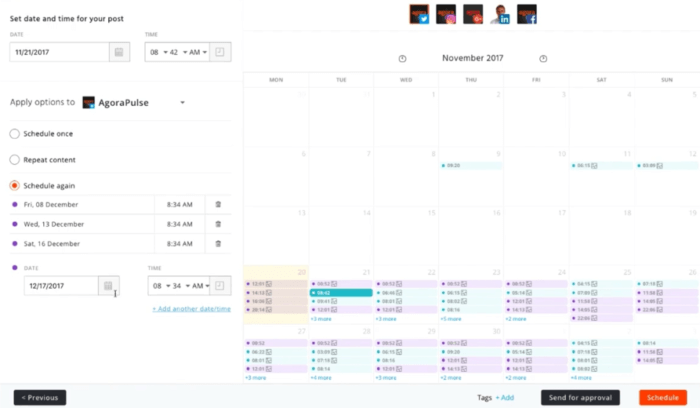
2. Email marketing plan
Marketing your business through email is a personal and highly effective way of reaching your prospects. On top of this, people check their email inboxes repeatedly throughout the day.
For instance, 59.4% of Americans check their emails at least four to six times daily. Therefore, contacting people via email can be a very effective strategy for your business, no matter your audience.
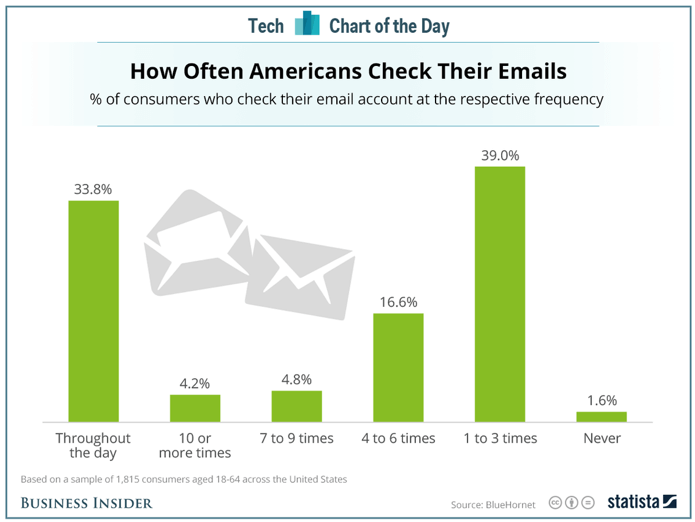
Perhaps one reason most marketers and businesses use emails is due to its high returns on investment (ROI). For instance, a survey of B2B marketers found that email is their top source of leads and produces leads with the highest ROI.
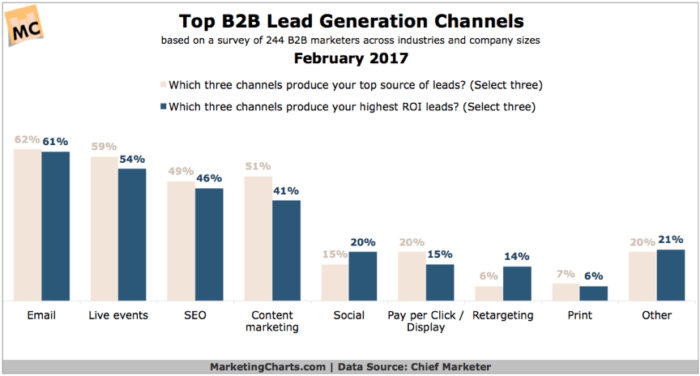
With emails, you can send messages to your audience to nurture your leads and pull them further through your sales funnel until they become customers.
However, personalization is now vital to email marketing. You need to send messages to each subscriber based on how they interact with your messages and their interests.
For instance, personalized subject lines are 26% more likely to be opened than non-personalized ones.
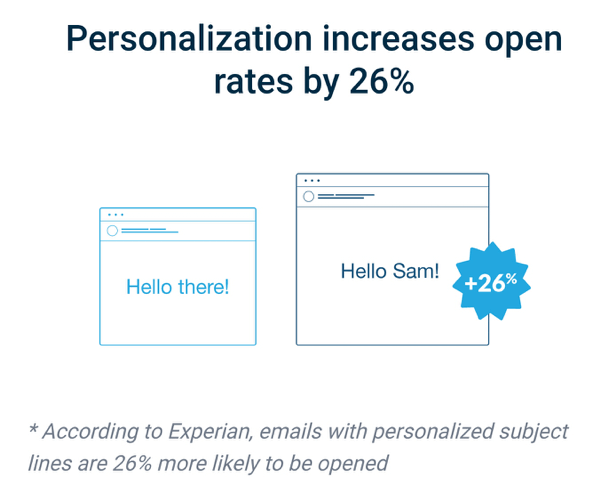
To create a plan for your email marketing, you need to have the following elements:
- Nurturing emails for different purposes.
- Frequency of sending emails.
- Subject lines.
- Products to market through email.
- The email service provider you’ll use.
A simple email service provider you can use is ConvertKit. It allows you to personalize your emails based on your subscribers’ actions and interests, send email broadcasts and check your analytics:
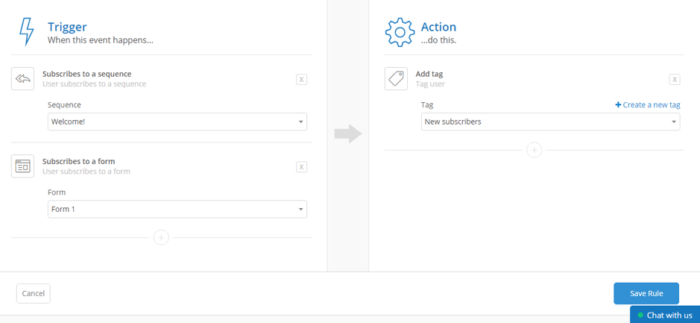
3. Search engine marketing (SEM) plan
When people need to find information or a product to buy, they use search engines. Is your website showing up when they’re searching for the service you provide?
With search engine marketing, you can gain organic traffic when people use keywords relevant to your business.
Consequently, it’s easier to convert such targeted traffic to leads and customers. Search engine marketing is divided into two major groups:
- Search engine optimization (SEO)
- Pay per click (PPC) ads
For SEO, you’ll need to wait for a long time (three to 12 months) to start seeing a considerable amount of organic traffic. Meanwhile, with PPC ads, you’ll start getting results within a short time.
Some elements to include in your search engine marketing plan are:
- Target keywords for pieces of content.
- Keyword intent (for example informational, transactional, etc.).
- Website optimization activities.
- Keyword research steps and tools to use.
With SEM, you need to carry out research to find keywords your potential customers are using and create valuable content to target them. Some tools you can use for this are SEMrush and Ahrefs.
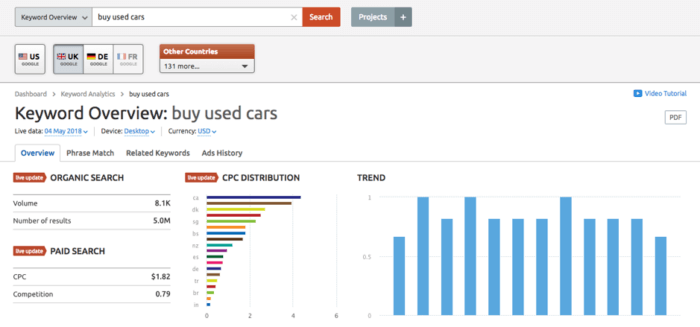
4. Content marketing plan
Content marketing is one of the best ways to market your products or services. But creating content is more than just cranking out posts at scale. You need to provide value and solve your audience’s problems.
Content helps you to show your expertise to your audience and to nurture leads at every stage of your sales funnel.
For instance, DemandGen Report revealed that 47% of buyers will view an average of three to five pieces of content before engaging with a sales rep.
On another note, 35% of B2B marketers who have a content marketing strategy tracked their ROI effectively, compared to 21% overall average.
![]()
So, what should you have in your content marketing plan?
- Content marketing goals.
- Platform you’ll use.
- Content frequency.
- Content length.
- Content marketing calendar.
- Content promotion tactics.
- Tools to create and promote content.
5. Paid media advertising plan
If you need fast results, then you need to pay to get exposure for your business. Another advantage you get with paid advertising is that you can target people who are likely to buy your products.
Platforms like Google and Facebook provide extensive targeting options that help you reach the right people. Some platforms for paid media advertising are:
- Paid search
- Paid social
- Influencer marketing
- TV
- Radio
- Billboards
While running a new business, or a small business, you only need to focus on a few paid advertising platforms. For your paid advertising plan, you need to include:
- Paid advertising platforms
- Advertising budget
- Target audience
- Target keywords
- Cost per click (CPC)
- Ideal buyer’s favorite social media channels
With the right paid advertising plan, you can get a healthy ROI on your spend. You can get these results without the wait associated with other marketing platforms.
6. Conversion optimization plan
What is the major aim of your website and marketing efforts? To gain qualified leads and turn them into customers. Put in another way: it’s all about conversions.
But no website or landing page is perfect when it comes to conversions. This means there’s always room for improvement. That’s why you must always experiment with different elements of your website and landing pages to improve your conversion rates.
Some elements of your website to optimize are:
- The design
- Website copy
- Presence or absence of visuals
- Location of page elements
To get the best out of your optimizations and A/B tests, you need to test a single element at a time and leave your tests to run for a reasonable amount of time. This will lead to more accurate results.
In your conversion optimization plan, you need to have details such as:
- Elements to optimize on your website.
- How to track results.
- Tools to use for conversion optimization.
A tool that helps with conversion optimization is Crazy Egg. You can see heat maps and video recordings to see how your visitors use your website, as well as perform A/B tests.

Conclusion
Creating marketing plans helps to get you focused on the right activities that will bring results for your business. Results such as more leads, customers, and revenue.
Having said that, it’s vital to include a strategy to track results in all your marketing plans. Thus, you’ll understand whether your actions are leading to results and how good these results are.
Use this list of marketing plans as a guide in building your own marketing plans today. With the potential benefits, it’s a no-brainer for your business.